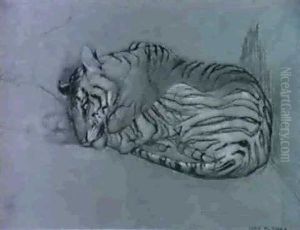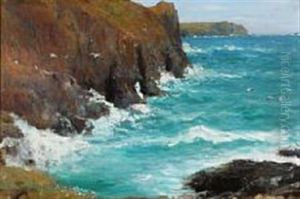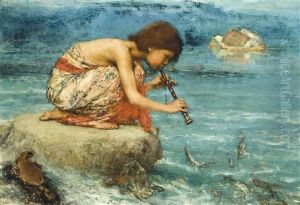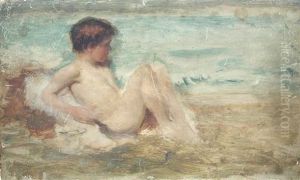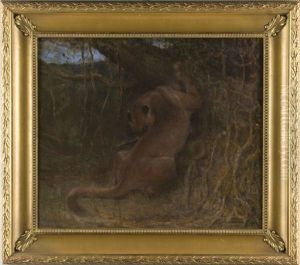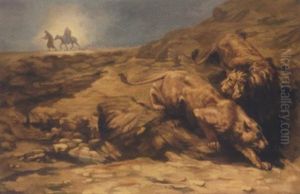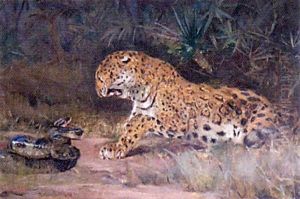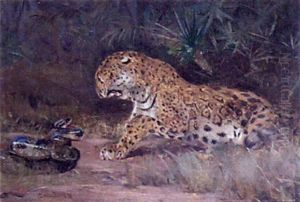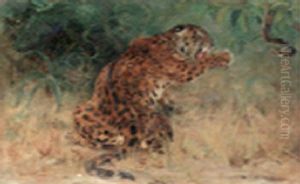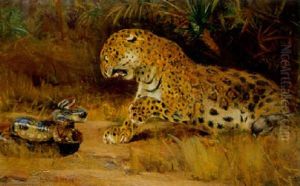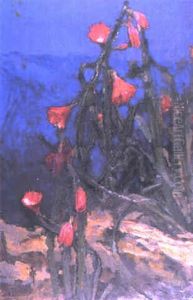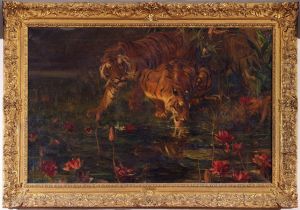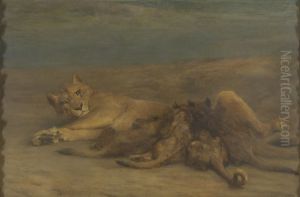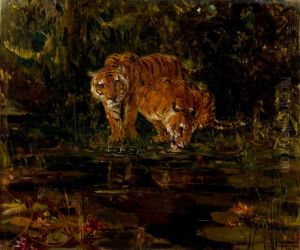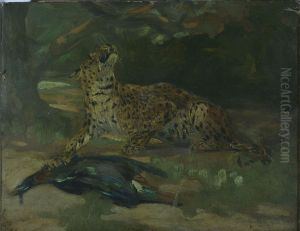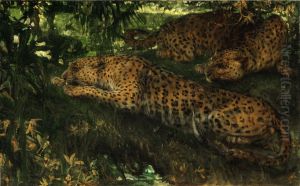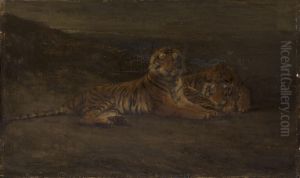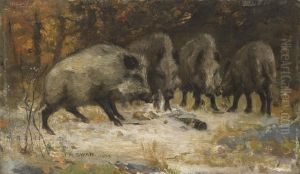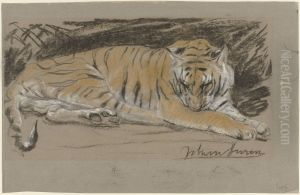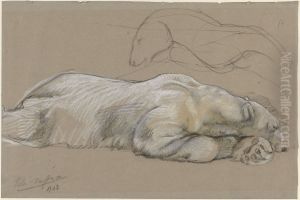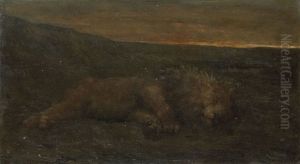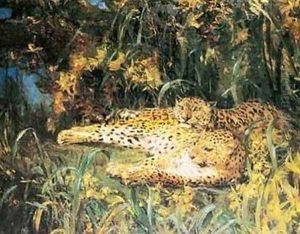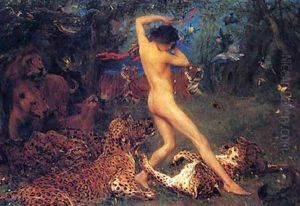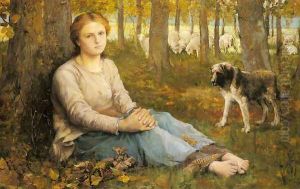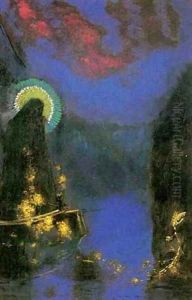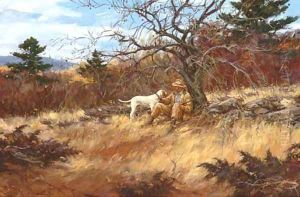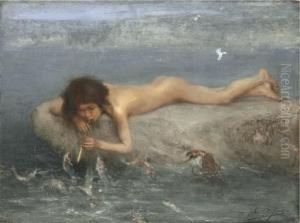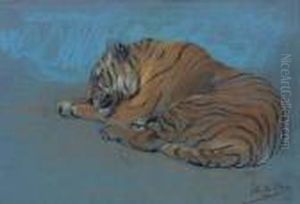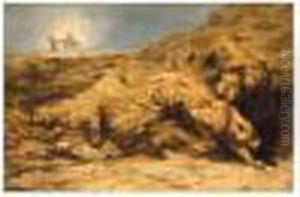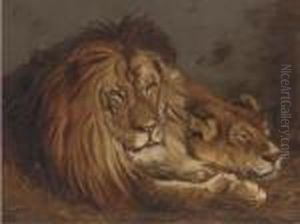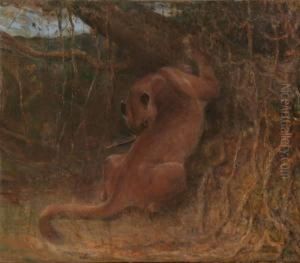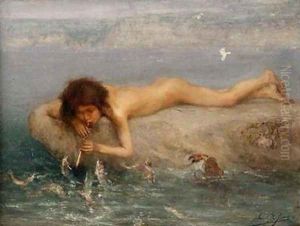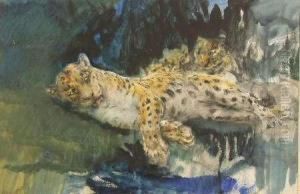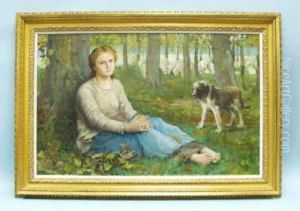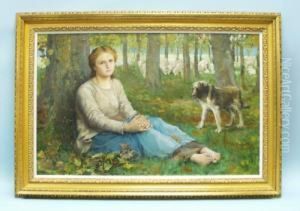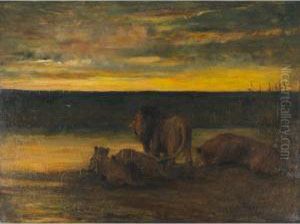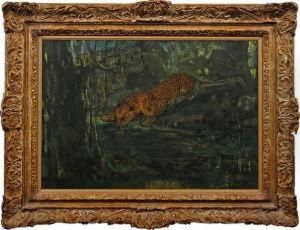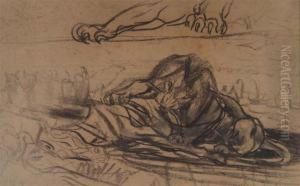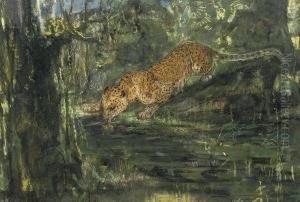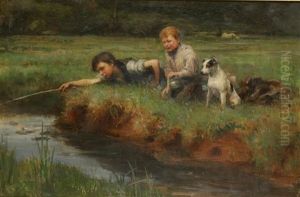John Macallan Swan Paintings
John Macallan Swan was a British artist known for his work as a painter and sculptor. Born on June 13, 1847, in Brentford, Middlesex, he developed an interest in art at an early age. Swan's artistic talents were evident, and he began his formal training at the Lambeth School of Art. He continued his studies at the Royal Academy Schools, where he honed his skills in painting and sculpture.
Swan's work was greatly influenced by his fascination with animals, particularly the exotic species he observed during his travels. His dedication to studying these creatures in detail contributed to the lifelike quality of his animal paintings and sculptures. He visited various zoos and circuses to sketch animals, and in 1889, he traveled to Paris and then to North Africa, where he was inspired by the wildlife and the vibrant local culture.
Throughout his career, Swan exhibited at the Royal Academy and other prominent venues. He was well-regarded by his contemporaries and received several awards, including a gold medal at the Paris Salon in 1889 for his sculpture 'Orpheus.' His work was characterized by a dynamic sense of movement and a realistic portrayal of animal anatomy.
Swan was also a member of the New English Art Club, a group of artists who sought to challenge the dominance of the Royal Academy and promote a more naturalistic style of painting. Despite his association with this avant-garde group, Swan maintained a relatively conservative approach to his art.
In addition to his animal subjects, Swan also painted human figures, often incorporating mythological or allegorical themes. His style blended academic realism with a sensitivity to the natural world, making his work distinctive and appealing to a broad audience.
John Macallan Swan's dedication to his craft and his unique blend of realism and romanticism left a lasting impact on the field of animalier art. He passed away on October 1, 1910, leaving behind a rich oeuvre that continues to be appreciated by art lovers and scholars.
